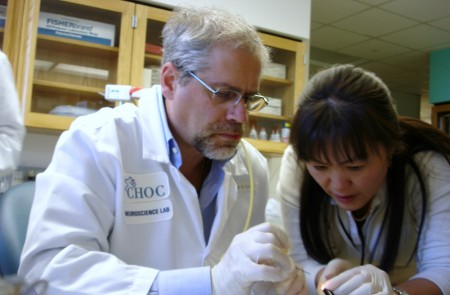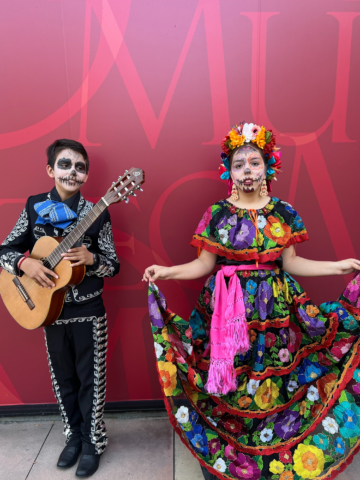 Scientists and researchers at the CHOC Children’s Research Institute continue to study Autism Spectrum Disorders (ASDs) in an effort to find the causes and develop effective treatments for these perplexing and mysterious disorders.
Scientists and researchers at the CHOC Children’s Research Institute continue to study Autism Spectrum Disorders (ASDs) in an effort to find the causes and develop effective treatments for these perplexing and mysterious disorders.
In one of CHOC’s research labs, Dr. Philip Schwartz and his team, including Drs. David Brick and Omar Khalid, use stem cells made from the skin of patients with autism or ASD and turn them into brain cells to better understand the conditions.
“Autism is a brain disease, so to unravel autism, you have to study the brain. While this seems obvious, it is extremely difficult,” says Dr. Schwartz. “The fact that we now can grow a brain cell from a skin cell is a huge advance.”
Their research began in 2009, when the National Institutes of Health awarded Dr. Schwartz a $3 million grant to hunt for autism’s genetic fingerprint. Colleagues at UC Davis provided skin biopsies from 100 carefully screened autistic boys to establish a cell bank at CHOC for research use by Dr. Schwartz and his team as well as other scientists around the world.
“The goal is to come up with therapies for autism that are based on science and also to develop diagnostic tools so we can diagnose autism or ASD in kids easier and earlier,” says Dr. Schwartz. “As we do this, we can start treatment sooner.”
This research allows scientists to have a culture of a live patient’s brain cells for study in the lab without touching the brain of the actual patient. The only other way to obtain brain cells for this purpose would be to wait for a child with autism or ASD to die, and then seek a brain sample.
The technique of growing brain cells from skin-derived stem cells was developed in 2006 by Shinya Yamanaka, a Japanese scientist who won a Nobel prize in 2012 for his work with stem cells.
Scientists can study autism patients of different backgrounds to make new discoveries, says Dr. Schwartz. He noted that autism is a spectrum of diseases, not just one, and that different patients will likely react to different drugs or may require several drugs.





